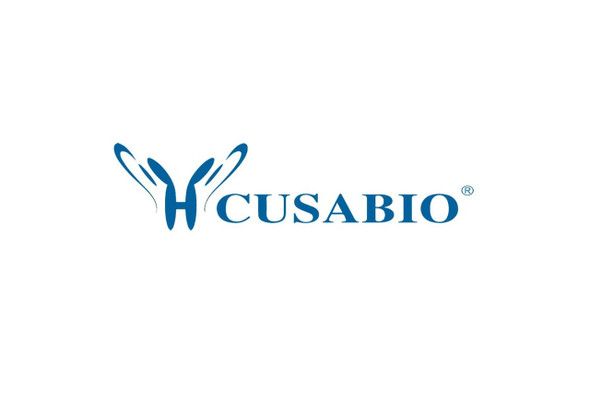Cusabio Macaca fascicularis Recombinants
Recombinant Macaca fascicularis Tumor necrosis factor ligand superfamily member 6 (FASLG), partial | CSB-EP008434MOV1
- SKU:
- CSB-EP008434MOV1
- Availability:
- 13 - 23 Working Days
Description
Recombinant Macaca fascicularis Tumor necrosis factor ligand superfamily member 6 (FASLG), partial | CSB-EP008434MOV1 | Cusabio
Alternative Name(s): CD95 ligand (CD95-L) (Fas antigen ligand) (Fas ligand) (FasL) (CD_antigen: CD178) (CD95L) (FASL) (TNFSF6)
Gene Names: FASLG
Research Areas: Cell Biology
Organism: Macaca fascicularis (Crab-eating macaque) (Cynomolgus monkey)
AA Sequence: QLFHLQKELAELRESTSQKHTASSLEKQIGHPSPPPEKKEQRKVAHLTGKPNSRSMPLEWEDTYGIVLLSGVKYKKGGLVINETGLYFVYSKVYFRGQSCTNLPLSHKVYMRNSKYPQDLVMMEGKMMSYCTTGQMWAHSSYLGAVFNLTSADHLYVNVSELSLVNFEESQTFFGLYKL
Source: E.coli
Tag Info: N-terminal 10xHis-tagged
Expression Region: 102-280aa
Sequence Info: Partial
MW: 26.5 kDa
Purity: Greater than 85% as determined by SDS-PAGE.
Relevance: Cytokine that binds to TNFRSF6/FAS, a receptor that transduces the apoptotic signal into cells. Involved in cytotoxic T-cell-mediated apoptosis, natural killer cell-mediated apoptosis and in T-cell development. Initiates fratricidal/suicidal activation-induced cell death in antigen-activated T-cells contributing to the termination of immune responses. TNFRSF6/FAS-mediated apoptosis has also a role in the induction of peripheral tolerance. Binds to TNFRSF6B/DcR3, a decoy receptor that blocks apoptosis.Tumor necrosis factor ligand superfamily member 6, soluble form: Induces FAS-mediated activation of NF-kappa-B, initiating non-apoptotic signaling pathways. Can induce apoptosis but does not appear to be essential for this process.FasL intracellular domain: Cytoplasmic form induces gene transcription inhibition.
Reference: "Molecular cloning, functional characterization, and enzyme-linked immunosorbent assay of cynomolgus monkey Fas ligand." Kirii Y., Inoue T., Yoshino K., Kayagaki N., Yagita H., Okumura K., Shibata H., Yoshikawa Y., Terao K. J. Immunol. Methods 278:201-209(2003)
Storage: The shelf life is related to many factors, storage state, buffer ingredients, storage temperature and the stability of the protein itself. Generally, the shelf life of liquid form is 6 months at -20?/-80?. The shelf life of lyophilized form is 12 months at -20?/-80?.
Notes: Repeated freezing and thawing is not recommended. Store working aliquots at 4? for up to one week.
Function:
Involvement in disease:
Subcellular Location:
Protein Families:
Tissue Specificity:
Paythway:
Form: Liquid or Lyophilized powder
Buffer: If the delivery form is liquid, the default storage buffer is Tris/PBS-based buffer, 5%-50% glycerol. If the delivery form is lyophilized powder, the buffer before lyophilization is Tris/PBS-based buffer, 6% Trehalose, pH 8.0.
Reconstitution: We recommend that this vial be briefly centrifuged prior to opening to bring the contents to the bottom. Please reconstitute protein in deionized sterile water to a concentration of 0.1-1.0 mg/mL.We recommend to add 5-50% of glycerol (final concentration) and aliquot for long-term storage at -20?/-80?. Our default final concentration of glycerol is 50%. Customers could use it as reference.
Uniprot ID: P63308
HGNC Database Link: N/A
UniGene Database Link: N/A
KEGG Database Link: N/A
STRING Database Link: N/A
OMIM Database Link: N/A






